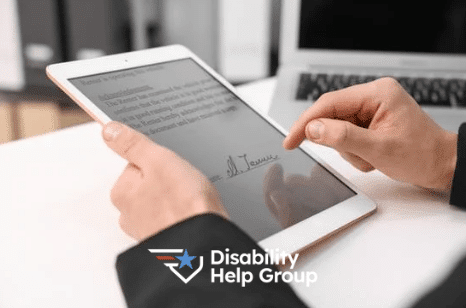What Are the GRIDS for SSDI? Social Security has special disability rules for people over the age 50. Social Security uses a chart called the Medical-Vocational guidelines to evaluate your claim known as the “grid rules”. The grid rules make it easier for older people to win their case.
SSDI GRIDS factors
Social Security understands that it may be harder for people over 50 to do new or different work. First, Social Security considers whether your conditions meet specific requirements under their medical listings. Often, these conditions can be very difficult to meet. Next, Social Security considers the GRIDS. The grid rules consider several factors. These include:
- Your age, education or work history
- Skills from your past work
- Your residual functional capacity (RFC)
SSDI GRIDS and your age
Generally, Social Security divides people into four age groups. Typically, if you are 50 or older, Social Security can use the GRIDS to approve your case even if you can do other work. The rules can be even more favorable for people over 55. These age groups include:
- Younger individuals: ages 18-49
- Closely approaching advanced age: ages 50-54
- Advanced age: ages 55-59
- Closely approaching retirement age: ages 60 and older
SSDI GRIDS and your education
Social Security considers your education level. Generally, the less education you have, the harder it would be to find other types of jobs. Social Security used to consider a person’s ability to communicate in English. However, a recent rule change removed this factor. Education categories include:
- Illiteracy – inability to read or write in any language
- Marginal – completed 6th grade or less in any country
- Limited – completed 7th through 11th grade in any country
- High school education and above in any country
SSDI GRIDS and you work history
Social Security must categorize your past work before applying the GRIDS. The GRIDS only apply if you can’t perform any of your past work. Social Security only considers past relevant work. This includes work performed in the last 15 years. It must have resulted in significant earnings. Temporary or part-time jobs might not count as past relevant work. Providing accurate information about your past work can be very important to your SSDI case.
SSDI GRIDS and physical levels of work
Social Security divides types of work by their physical requirements. For people 50 or older, the more physical your past work was, the easier it is for Social Security to apply the GRIDS. The physical categories of work include:
- Sedentary – sitting jobs that don’t require lifting more than 10 pounds
- Light – usually require more standing and walking and don’t require lifting more than 20 pounds
- Medium – requires lifting between 25-50 pounds
- Heavy – requires lifting more than 50 pounds
SSDI GRIDS and job skills
Social Security looks at any skills required to perform your past work. Sometimes, skills from your past work can be used to do different types of jobs. Generally, these skills can be used in other jobs with little or no additional training. Social Security refers to these skills as “transferable skills”. If Social Security finds that you have transferable skills to other work, the GRIDS may be harder to apply.
SSDI GRIDS and getting around transferable skills
However, there can be ways around transferable skills. Typically, this can be done if you have a mental health impairment. Mental health impairments include conditions such as depression or anxiety. However, they can also include side effects from medications or the impact pain has on mental functioning. When a person has medical evidence documenting mental health impairment, Social Security must evaluate their ability to perform the mental demands of work. Usually, Social Security concludes a person can only perform simple, routine tasks when there is evidence of mental health impairment. This limitation eliminates transferable skills.
SSDI GRIDS and your RFC
Social Security defines residual functional capacity (RFC) as what you can do despite your limitations. An RFC includes both physical and mental limitations. Social Security determines your RFC based on your medical records. They can also consider opinions from your treating doctors. Social Security cannot determine your RFC from a diagnosis alone. Therefore, you must see your doctors regularly. You should see specialists if you can.
Applying SSDI GRIDS
Once Social Security figures out your RFC and your work history, they will look at the GRIDS. Social Security has separate GRIDS for sedentary, light and medium work. For people over 50, the more physically limited you are and the more physically demanding your past work was, the more likely the GRIDS show you should be found disabled.
Example 1: SSDI GRIDS over 50
For example, Janet, a 52 year old woman previously worked as an office manager. Janet completed high school. She filed for SSDI because she was having worsening anxiety and osteoarthritis in her knees. Janet has difficulty standing and walking for long periods. Her doctors prescribed her a cane. Despite medication and therapy, Janet has difficulty managing her anxiety symptoms. Social Security found that Janet could not perform her past work. They also found that she could not do any other light jobs. She also was limited to simple and routine tasks. Therefore, the GRIDS applied and Janet was approved for disability.
Example 2: SSDI GRIDS over 55
In another example, Jose filed for SSDI after injuring his back. He is 57 years old and has a high school education. Jose worked for many years as a dishwasher. Since his injury, he has difficulty sitting and standing for long periods. He can’t lift or carry more than 10 pounds. Social Security found that he could do light work. His job as a dishwasher doesn’t have any transferable skills. Therefore, the GRIDS allowed social Security to approve Jose’s case.
Call Now for a Free Case Review, 800-700-0652
Make sure you start your SSDI and VA disability claim the right way and apply for all the benefits you deserve. Contact us now for a free consultation.
Related Articles
- Is Osteoporosis a Disability?
- What is the Difference Between SSI and SSDI?
- I Just Received a Function Report Questionnaire from Social Security. What Should I Do?
- Why Your SSD Claim Might Be Denied?
- What is the SSDI Payment Schedule?
- How can I Check on My Disability Claim?
- Why Should I Hire a Disability Lawyer?
- What are the Over 55 Grid Rules?
- VA Benefits Appeal
- VA Disability Remand
- What are Social Security Disability Questions?







